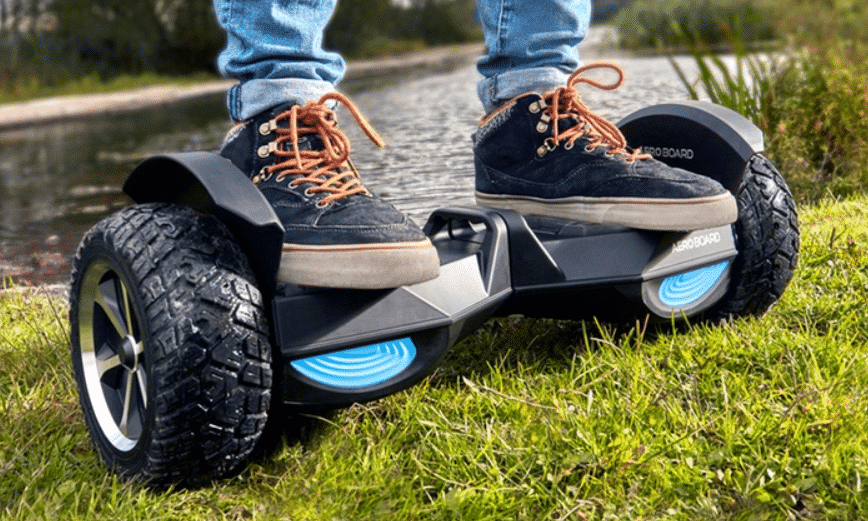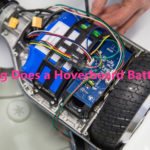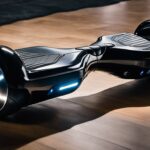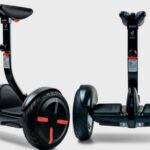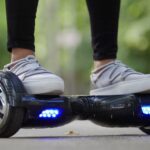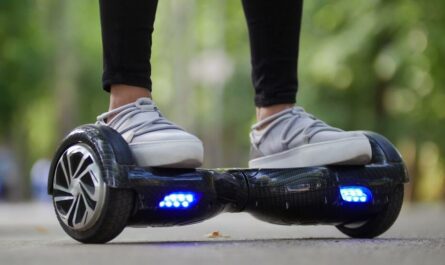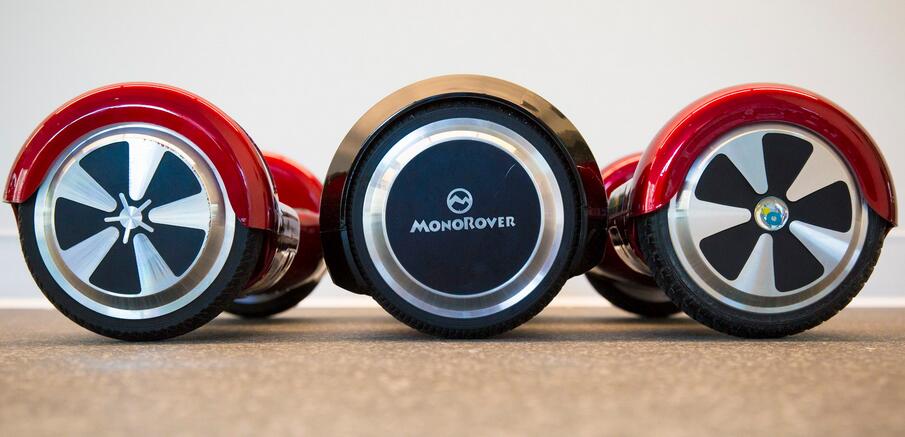Hoverboards have become increasingly popular as personal transportation devices, providing a convenient and eco-friendly way to commute short distances. However, one question that often arises is whether hoverboards are capable of traversing uphill terrain. This article will explore the mechanics behind hoverboards and their uphill capabilities. In addition, we will discuss factors that affect their performance on inclines, and provide the best hoverboard models for uphill travel.
Table of Contents
What is a Hoverboard?
A hoverboard, also known as a self-balancing scooter, is a two-wheeled electric device that allows riders to navigate through balancing their body weight. It consists of a platform with two wheels, connected to a motorized axle. By shifting their weight, riders can control the speed and direction of the hoverboard.
Hoverboards operate on the principle of dynamic stabilization. They utilize gyroscopic sensors, accelerometers, and tilt sensors to detect changes in the rider’s center of gravity. Based on these inputs, the hoverboard’s motor adjusts the speed of each wheel to maintain balance and stability.
The Mechanics of Hoverboards Going Uphill
1. Power and Motor Capacity
When it comes to uphill travel, the power and motor capacity of a hoverboard play crucial roles. Higher motor wattage allows the hoverboard to generate more torque, enabling it to climb steeper inclines. It is recommended to opt for a hoverboard with a motor capacity of at least 500 watts for better uphill performance. A more powerful motor can handle the increased load and provide the necessary power to conquer uphill slopes.
2. Wheel Size and Traction
The size of the wheels directly impacts a hoverboard’s ability to tackle uphill slopes. Larger wheels provide better traction and stability, making it easier to navigate inclines. The diameter of the wheels determines how well the hoverboard can handle uneven surfaces and obstacles.
Additionally, hoverboards with rubberized or all-terrain tires offer superior grip on various surfaces, enhancing their uphill capabilities. These tires provide better traction, reducing the chances of slipping and providing a more secure ride on uphill terrains.
3. Hoverboard Battery Life and Incline Performance
The battery life of a hoverboard is another critical factor to consider for uphill travel. As the hoverboard exerts more power to overcome inclines, it drains the battery faster. Opting for a hoverboard with a long-lasting battery is essential to ensure a smooth uphill ride without interruptions.
The battery capacity is measured in watt-hours (Wh) and is an indicator of how much energy the battery can store. A higher watt-hour rating means the battery can provide power for a longer duration.
When choosing a hoverboard for uphill travel, look for models with larger battery capacities, such as 200Wh or higher, to ensure optimal performance when tackling inclines. A hoverboard with a larger battery capacity can handle the increased power demands while climbing uphill, allowing for a longer and more enjoyable ride.
Key Factors Affecting Hoverboard Uphill Capabilities
1. Maximum Incline Angle for Different Models
Different hoverboard models have varying maximum incline angles they can handle. It is important to check the specifications of a hoverboard to determine its uphill capabilities. Most hoverboards can handle inclines up to 15 degrees, while models designed for off-road use can tackle even steeper gradients.
Keep in mind that the maximum incline angle is often tested under ideal conditions, such as a smooth and dry surface. Factors like rider weight, terrain conditions, and battery charge level can affect the actual performance on inclines.
It is advisable to consider a hoverboard with a higher maximum incline angle than you anticipate encountering to ensure it can handle various uphill challenges.
2. Weight and Weight Distribution
The weight of the rider and the distribution of that weight on the hoverboard can significantly affect its uphill performance. Heavier riders may find it more challenging to ascend steep inclines, as the hoverboard’s motor has to work harder to maintain balance.
Additionally, the weight distribution plays a crucial role. Riders should aim to distribute their weight evenly over the foot pads to ensure optimal balance and stability.
When riding uphill, it is essential to maintain a centered and balanced posture on the hoverboard. Leaning too far forward or backward can disrupt balance and stability, making it more difficult to climb inclines. By keeping the weight distribution centered and evenly distributed over the foot pads, riders can optimize the hoverboard’s uphill performance.
3. Surface Conditions and Hoverboard Performance
The surface condition also plays a role in a hoverboard’s ability to go uphill. Smooth surfaces allow for smoother rides, while rough or uneven terrains may pose challenges. Gravel or loose surfaces can reduce traction, making it harder for the hoverboard to maintain stability while climbing inclines.
When planning to ride a hoverboard uphill, it is advisable to choose surfaces with good traction and minimal obstacles. Smooth pavements or concrete surfaces are generally easier to navigate than loose gravel or dirt paths. However, some hoverboards are designed with off-road capabilities and can handle rougher terrains with ease.
How to Choose the Right Hoverboard for Uphill Travel?
When selecting a hoverboard for uphill travel, it’s crucial to consider specific specifications. Look for hoverboards with high motor wattage, larger wheel sizes, all-terrain tires, and longer battery life. These features will enhance the hoverboard’s uphill capabilities and ensure a smoother and safer ride.
Motor wattage determines the power output and torque of a hoverboard. Higher-wattage motors can generate more power, making uphill travel easier. Look for hoverboards with motors in the range of 500 watts or higher for better uphill performance.
Wheel size is another critical factor to consider. Larger wheels provide better traction and stability, allowing the hoverboard to navigate inclines more efficiently. Look for hoverboards with wheel sizes of at least 6.5 inches or larger for improved uphill capabilities.
All-terrain tires are designed to provide better grip and traction on various surfaces, including uneven terrains. These tires often have deeper treads and are made of durable materials to handle different conditions effectively.
If you plan to ride on rough or off-road terrains, consider hoverboards equipped with all-terrain tires for optimal uphill performance.
Battery life is essential, especially for longer rides and extended uphill journeys. Look for hoverboards with larger battery capacities, such as 200Wh or higher, to ensure a longer and more enjoyable riding experience.
Recommended Hoverboard Brands and Models
Several hoverboard brands and models are known for their excellent uphill performance. Here are a few recommended options:
- Segway Ninebot S: The Segway Ninebot S is a popular choice for uphill travel, featuring a powerful motor, large wheels, and excellent stability. With a maximum incline angle of 15 degrees, it can handle moderate uphill slopes with ease.
- Razor Hovertrax 2.0: The Razor Hovertrax 2.0 offers a smooth and stable ride, with a powerful motor and a maximum incline angle of 15 degrees. It is also equipped with EverBalance technology, providing enhanced balance and control.
- Swagtron T580: The Swagtron T580 is a versatile hoverboard suitable for both urban and off-road environments. With a powerful motor, all-terrain tires, and a maximum incline angle of 30 degrees, it offers excellent uphill performance.
These models are just a few examples, and there are many other hoverboards on the market that offer great uphill capabilities. When choosing a hoverboard, compare the specifications, and customer reviews, and consider your specific requirements to find the best option for your uphill travel needs.
Riding Techniques for Going Uphill on a Hoverboard
1. Leaning and Balance Techniques
To successfully navigate uphill inclines on a hoverboard, riders must master proper leaning and balance techniques.
When ascending, it is essential to lean slightly forward to maintain momentum and keep the hoverboard moving. Distribute your weight evenly and avoid excessive leaning, as it can destabilize the hoverboard.
The key to maintaining balance while going uphill is to use subtle shifts in your body weight. Leaning slightly forward helps transfer more weight to the front wheels, providing better traction and stability.
However, avoid leaning too far forward, as it can disrupt balance and potentially lead to falls. Remember to maintain a centered posture and make small adjustments as needed to keep the hoverboard moving smoothly uphill.
2. Speed and Momentum
Maintaining an appropriate speed and managing momentum is crucial when riding uphill. Starting with a bit of speed before encountering an incline can help carry the hoverboard upward. However, avoid excessive speed, as it can make it difficult to control the hoverboard’s movement and balance.
When approaching an incline, maintain a consistent speed that allows you to maintain control and balance. Going too slow can cause the hoverboard to lose momentum and struggle to climb the incline while going too fast can make it challenging to maintain stability. You can experiment with different speeds and find the right balance that allows you to ascend inclines comfortably.
Safety Considerations When Riding Hoverboards Uphill
1. Protective Gear
Safety should always be a top priority when riding a hoverboard uphill. It is recommended to wear appropriate protective gear, including a helmet, knee pads, elbow pads, and wrist guards. This protective gear can prevent injuries in case of falls or accidents while navigating inclines.
Helmets are particularly important, as they protect your head from potential impact. Choose a high-quality helmet that fits properly and meets safety standards.
Knee pads, elbow pads, and wrist guards provide added protection for vulnerable areas during falls or collisions. Investing in quality protective gear ensures a safer riding experience, especially when tackling uphill slopes.
2. Recognizing and Avoiding Hazards
When riding hoverboards uphill, it is crucial to identify and avoid potential hazards. Keep an eye out for potholes, uneven surfaces, or debris that may obstruct the path. Adjust your speed and maneuver according to the terrain to ensure a safe and enjoyable ride.
Before riding uphill, carefully survey the route to identify any potential obstacles or hazards. If you encounter loose gravel, sand, or other challenging surface conditions, adjust your riding technique accordingly.
Slow down and focus on maintaining balance and control to navigate these obstacles safely. It’s better to take your time and proceed cautiously than to rush and risk accidents or injuries.
Furthermore, be aware of your surroundings and take note of other pedestrians or vehicles sharing the same path. Communicate your intention to pass or yield to others, and exercise caution when navigating tighter or crowded spaces. Always ride defensively and anticipate potential risks to ensure a safe and enjoyable ride uphill.
Maintenance Tips to Enhance Uphill Performance
Proper maintenance of your hoverboard can significantly improve its uphill performance and overall longevity. Here are a few maintenance tips to consider:
- Regularly check and inflate the tires: Proper tire pressure is crucial for optimal traction and ride quality. Check the manufacturer’s recommendations for the ideal tire pressure and ensure your hoverboard’s tires are properly inflated. Underinflated or overinflated tires can affect performance and stability, especially when going uphill.
- Clean the hoverboard’s wheels and bearings: Over time, debris and dirt can accumulate in the wheels and bearings, affecting their rotation and overall performance. Regularly clean the wheels and bearings using a soft brush or cloth to remove any dirt or debris. This will ensure smoother rotation and better overall performance, especially when navigating uphill slopes.
- Keep the hoverboard’s battery charged: A fully charged battery is essential for optimal uphill performance. Follow the manufacturer’s recommendations for charging your hoverboard’s battery and avoid overcharging or keeping it at low charge levels for extended periods. Maintaining a well-charged battery helps ensure consistent power output, allowing your hoverboard to tackle inclines more effectively.
- Inspect and tighten any loose screws or connections: Regularly inspect your hoverboard for loose screws or connections. Vibrations and regular use can cause screws and connections to become loose, affecting stability and safety. Use the appropriate tools to tighten any loose parts and ensure everything is secure before riding uphill.
By following these maintenance tips, you can enhance your hoverboard’s uphill performance, extend its lifespan, and ensure a safer and more enjoyable riding experience.
Conclusion
Can hoverboards go uphill? The answer is a resounding yes, but their uphill capabilities depend on various factors such as motor capacity, wheel size, and surface conditions.
By considering these factors, choosing the right hoverboard, and implementing proper riding techniques, riders can enjoy smooth and exhilarating uphill journeys on their hoverboards. So, gear up, explore hilly terrains, and unlock the potential of your hoverboard for uphill travel!

